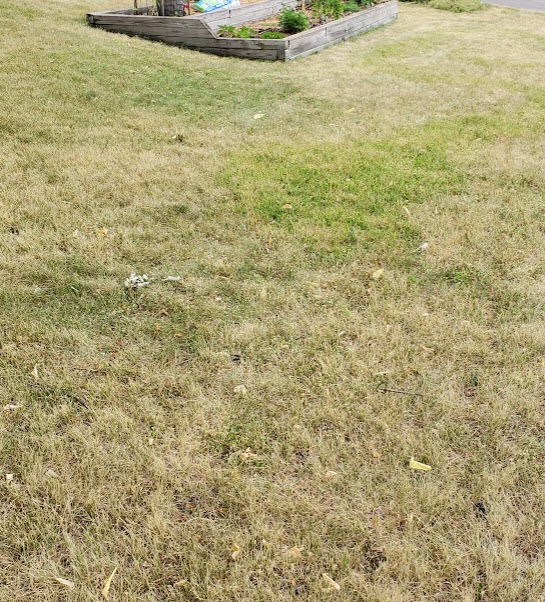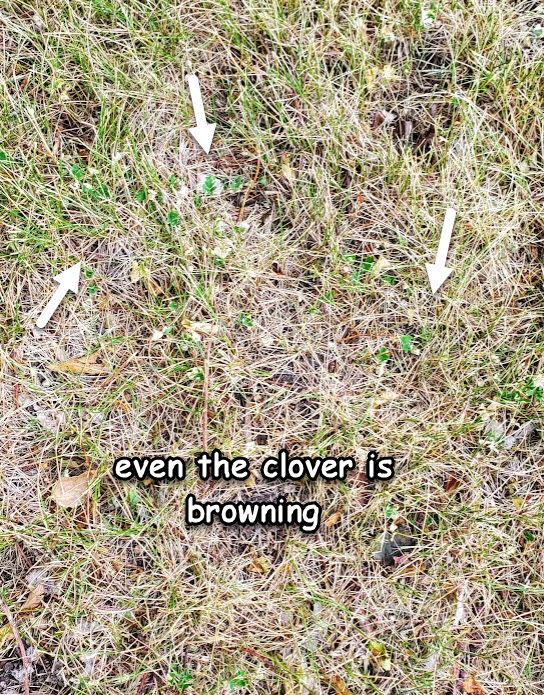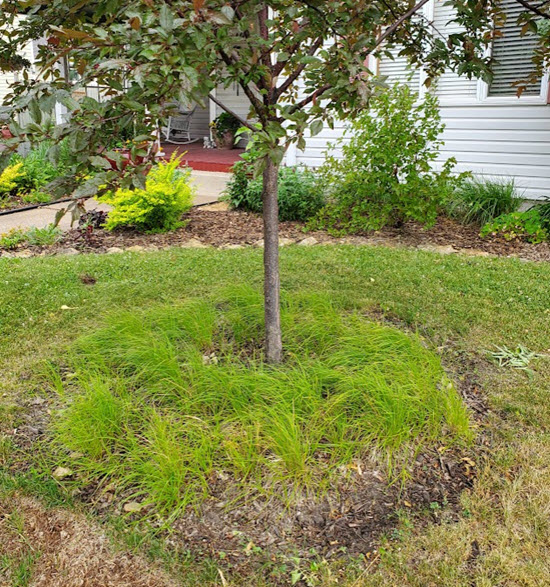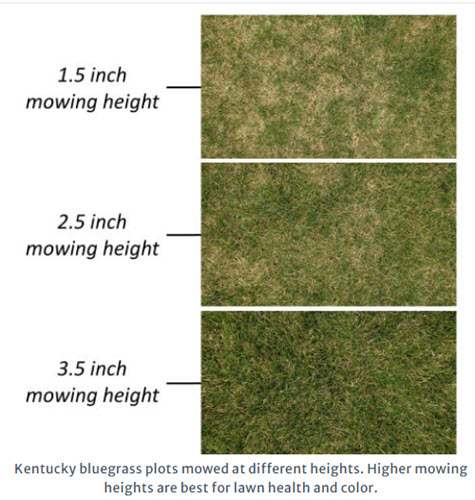Click below to listen to my 2 min. Garden Bite radio show: Lawns and drought – again

Lawns are, once again, looking rough in some parts of the country! Kentucky bluegrass, the least tolerant of drought, which is what most lawns are, can start turning brown after about 7 days without water. This browning appearance is the grass going into dormancy in order to survive the drought. Some leaf tissue will die, but the base and roots of the grass are still alive and will green up when water returns. IF/WHEN the water returns with either rain or the sprinkler.
According to the University of Minnesota Extension, Kentucky bluegrass DOES recover relatively fast compared to other turfgrasses.

Tall and Fine fescues can remain green for at least 28 days without water in Minnesota. Tall fescue is known for its heat and drought tolerance. Among the Fine fescues, hard fescues have excellent drought tolerance. Chewings fescues and slender creeping red fescues have good to excellent drought tolerance.
This from Oregon State University:
When planted side by side fine fescues generally rank as follows for drought resistance from most to least:
Sheep fescue > Hard fescue> Strong creeping red fescue = Slender creeping red fescue > Chewings fescue
Under prolonged drought, bunch type fine fescues tend to develop clumps. This is particularly noticeable when Chewings fescue is subjected to prolonged drought stress.
Good information if your lawn turns crunchy and needs to be replaced…
I have such an aversion to watering lawns, on the other hand there’s nothing wrong with some lawn! I know, I just said that!!

For now, limit traffic on your lawn, don’t mow… the lawn mower is heavy and will damage it further, do NOT fertilize until we have more significant rainfall.
When your lawn starts coming back, keep the height at 3 to 4 inches.


